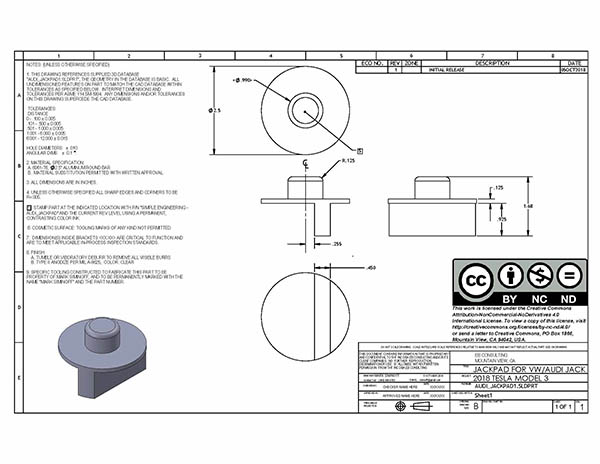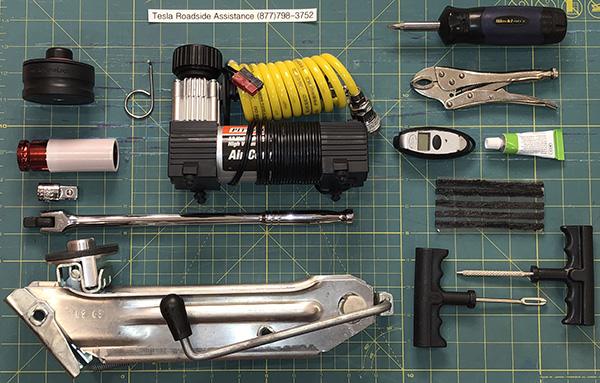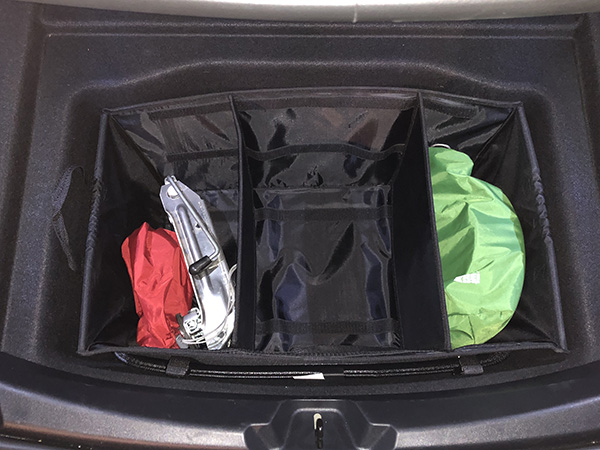IMO the most important piece of "kit" to have with you is your mobile phone. If you haven't already entered Tesla's toll-free number into your contacts, this is as good a time as any (877) 798-3752

Here's a pic' of what I currently have in
my "No Spare Tire" kit:
I keep this stuff in a nylon pouch in the lower trunk (see below). It all fits except the jack and breaker bar, and the total weight of everything is 9lbs.
The green bag on the right has my charge cord in it.
Hey Rip', you might wanna fact-check your numbers before posting...
• A long-range dual-motor Model 3 weighs in just shy of 4,100 pounds... and the 50/50 weight distribution puts ~1,025lbs on each corner. Lifting my car with the Audi jack requires very little effort.
• I don't know how many Elon personally sold last quarter, but it's safe to say it was nowhere near 80K. (Tesla only produced 53,239 Model 3's in Q3 2018).
• I do hope that somebody copies the my jack pad and sells them inexpensively.. I doubt anybody here would pay what I would charge to make 'em. Old Audi jacks are cheap and readily available on eBay or ay any auto-dismantler.
-Mark










